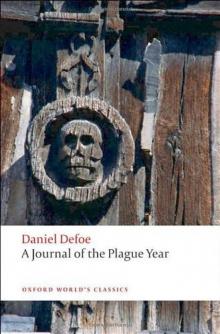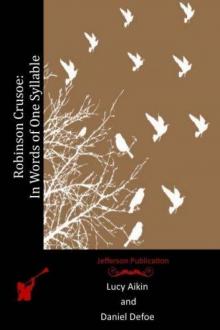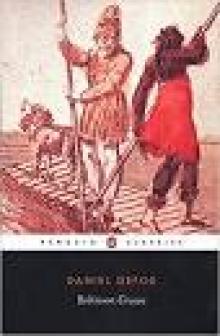- Home
- Daniel Defoe
Memoirs of a Cavalier
Memoirs of a Cavalier Read online
Produced by Audrey Longhurst, Audrey Longhurst, Leah Moser and theOnline Distributed Proofreading Team.
MEMOIRS OF A CAVALIER
or
A Military Journal of the Wars in Germany, and the Wars in England.From the Year 1632 to the Year 1648.
By Daniel Defoe
Edited with Introduction and Notes by Elizabeth O'Neill
1922
INTRODUCTION.
Daniel Defoe is, perhaps, best known to us as the author of _RobinsonCrusoe_, a book which has been the delight of generations of boys andgirls ever since the beginning of the eighteenth century. For it wasthen that Defoe lived and wrote, being one of the new school of prosewriters which grew up at that time and which gave England new formsof literature almost unknown to an earlier age. Defoe was a vigorouspamphleteer, writing first on the Whig side and later for the Toriesin the reigns of William III and Anne. He did much to foster thegrowth of the newspaper, a form of literature which henceforth becamepopular. He also did much towards the development of the modern novel,though he did not write novels in our sense of the word. His bookswere more simple than is the modern novel. What he really wrote werelong stories told, as is _Robinson Crusoe_, in the first person andwith so much detail that it is hard to believe that they are works ofimagination and not true stories. "The little art he is truly masterof, is of forging a story and imposing it upon the world as truth." Sowrote one of his contemporaries. Charles Lamb, in criticizing Defoe,notices this minuteness of detail and remarks that he is, therefore,an author suited only for "servants" (meaning that this method canappeal only to comparatively uneducated minds). Really as every boyand girl knows, a good story ought to have this quality of seemingtrue, and the fact that Defoe can so deceive us makes his work themore excellent reading.
The _Memoirs of a Cavalier_ resembles _Robinson Crusoe_ in so far asit is a tale told by a man of his own experiences and adventures. Ithas just the same air of truth and for a long time after its firstpublication in 1720 people were divided in opinion as to whether itwas a book of real memoirs or not. A critical examination has shownthat it is Defoe's own work and not, as he declares, the contents ofa manuscript which he found "by great accident, among other valuablepapers" belonging to one of King William's secretaries of state.Although his gifts of imagination enabled him to throw himself intothe position of the Cavalier he lapses occasionally into his owncharacteristic prose and the style is often that of the eighteenthrather than the seventeenth century, more eloquent than quaint. Again,he is not careful to hide inconsistencies between his preface and thetext. Thus, he says in his preface that he discovered the manuscriptin 1651; yet we find in the _Memoirs_ a reference to the Restoration,which shows that it must have been written after 1660 at least. Thereis abundant proof that the book is really a work of fiction and thatthe Cavalier is an imaginary character; but, in one sense, it is atrue history, inasmuch as the author has studied the events and spiritof the time in which his scene is laid and, though he makes manymistakes of detail, he gives us a very true picture of one of the mostinteresting periods in English and European history. The _Memoirs_thus represent the English historical novel in its beginnings, a muchsimpler thing than it was to become in the hands of Scott and laterwriters.
The period in which the scene is laid is that of the English CivilWar, in which the Cavalier fought on the side of King Charles Iagainst the Puritans. But his adventures in this war belong to thesecond part of the book. In the first part, he tells of his birth andparentage, the foreign travel which was the fashionable completionof the education of a gentleman in the seventeenth century, and hisadventures as a volunteer officer in the Swedish army, where he gainedthe experience which was to serve him well in the Civil War at home.Many a real Cavalier must have had just such a career as Defoe's herodescribes as his own. After a short time at Oxford, "long enough fora gentleman," he embarked on a period of travel, going to Italy byway of France. The Cavalier, however, devotes but little space todescription, vivid enough as far as it goes, of his adventures inthese two countries for a space of over two years. Italy, especially,attracted the attention of gentlemen and scholars in those days,but the Cavalier was more bent on soldiering than sightseeing and hehurries on to tell of his adventures in Germany, where he first reallytook part in warfare, becoming a volunteer officer in the army ofGustavus Adolphus, the hero King of Sweden, and where he met withthose adventures the story of which forms the bulk of the first partof the _Memoirs_.
To appreciate the tale, it will be necessary to have a clear ideaof the state of affairs in Europe at the time. The war which wasconvulsing Germany, and in which almost every other European powerinterfered at some time, was the Thirty Years' War (1618--1648), astruggle having a special character of its own as the last of thereligious wars which had torn Europe asunder for a century and thefirst of a long series of wars in which the new and purely politicalprinciple of the Balance of Power can be seen at work. The strugglewas, nominally, between Protestant and Catholic Germany for, duringthe Reformation period, Germany, which consisted of numerous statesunder the headship of the Emperor, had split into two great camps. TheNorthern states had become Protestant under their Protestant princes.The Southern states had remained, for the most part, Catholic or hadbeen won back to Catholicism in the religious reaction known as theCounter-Reformation. As the Catholic movement spread, under a CatholicEmperor like Ferdinand of Styria, who was elected in 1619, it wasinevitable that the privileges granted to Protestants should becurtailed. They determined to resist and, as the Emperor had thesupport of Spain, the Protestant Union found it necessary to call inhelp from outside. Thus it was that the other European powers came tointerfere in German affairs. Some helped the Protestants from motivesof religion, more still from considerations of policy, and the longstruggle of thirty years may be divided into marked periods in whichone power after another, Denmark, Sweden, France, allied themselveswith the Protestants against the Emperor. The _Memoirs_ areconcerned with the first two years of the Swedish period of the war(1630--1634), during which Gustavus Adolphus almost won victoryfor the Protestants who were, however, to lose the advantage of hisbrilliant generalship through his death at the battle of Luetzen in1632. Through the death of "this conquering king," the Swedes lost thefruits of their victory and the battle of Luetzen marks the end of whatmay be termed the heroic period of the war. Gustavus Adolphus standsout among the men of his day for the loftiness of his character aswell as for the genius of his generalship. It is, therefore, fittingenough that Defoe should make his Cavalier withdraw from the Swedishservice after the death of the "glorious king" whom he "could nevermention without some remark of his extraordinary merit." For two yearslonger, he wanders through Germany still watching the course of thewar and then returns to England, soon to take part in another war athome, namely the Civil War, in which the English people were dividedinto two great parties according as they supported King Charles I orthe members of the Long Parliament who opposed him. According to the_Memoirs_, the Cavalier "went into arms" without troubling himself "toexamine sides." Defoe probably considered this attitude as typicalof many of the Cavalier party, and, of course, loyalty to the king'sperson was one of their strongest motives. The Cavalier does not enterlargely into the causes of the war. What he gives us is a picture ofarmy life in that troubled period. It will be well, however, to bearin mind the chief facts in the history of the times.
From the beginning of his reign, Charles had had trouble with hisparliaments, which had already become very restless under James I.Charles's parliaments disapproved of his foreign policy and theirunwillingness to grant subsidies led him to fall back on questionablemethods of raising money, especially during the eleven years(1629--1640) in which he ruled without a parl
iament. Charles had nogreat scheme of tyranny, but avoided parliaments because of theircriticism of his policy. At first the opposition had been purelypolitical, but the parliament of 1629 had attacked also Charles'sreligious policy. He favoured the schemes of Laud (archbishop ofCanterbury 1633--1649) and the Arminian school among the clergy, whowished to revive many of the old Catholic practices and some of thebeliefs which had been swept away by the Reformation. Many peoplein England objected not only to these but even to the wearing of thesurplice, the simplest of the old vestments, on the use of which Laudtried to insist. This party came to be known as Puritans and theyformed the chief strength of the opposition to the King in the LongParliament which met in 1640. For their attack on the Church led manywho had at first opposed the King's arbitrary methods to go over tohis side. Thus, the moderate men as well as the loyalists formed aking's party and the opposition was almost confined to men who hatedthe Church as much as the King. The Puritans who loved simplicityof dress and severity of manners and despised the flowing locks andworldly vanities which the Cavaliers loved were, by these, nicknamedRoundheads on account of their short hair. Defoe, in the _Memoirs_,gives us less of this side of the history of the times than might havebeen expected. The war actually began in August, 1642, and whatDefoe gives us is military history, correct in essentials and fullof detail, which is, however, far from accurate. For instance, in hisaccount of the battle of Marston Moor, he makes prince Rupert commandthe left wing, whereas he really commanded the right wing, the leftbeing led by Lord Goring who, according to Defoe's account, commandedthe main battle. He conveys to us, however, the true spirit of thewar, emphasizing the ability and the mistakes on both sides, showinghow the king's miscalculations or Rupert's rashness deprived theRoyalist party of the advantages of the superior generalship andfighting power which were theirs in the first part of the war and howgradually the Roundheads got the better of the Cavaliers. The detailednarrative comes to an end with the delivery of the King to theParliament by the Scots, to whom he had given himself up in hisextremity. A few lines tell of his trial and execution and the_Memoirs_ end with some pages of "remarks and observations" on thewar and a list of coincidences which had been noted in its course.The latter, savouring somewhat of superstition, appear natural inwhat purports to be a seventeenth century text, but the summing up ofconclusions about the war is rather such as might be made by a more orless impartial observer at a later date than by one who had taken anactive part in the struggle. In reading the _Memoirs_ this mixture ofwhat belongs to the seventeenth century with the reflections of Defoe,in many ways a typical eighteenth century figure, must be borne inmind. The inaccuracies are pointed out in the notes, but these neednot prevent us from entering with zest into the spirit of the story.
E. O'NEILL.
4 _March_ 1908.
CONTENTS
INTRODUCTION. PREFACE TO THE FIRST EDITION. TEXT: Part I. Part II. NOTES.

 Captain Singleton
Captain Singleton An Essay Upon Projects
An Essay Upon Projects Moll Flanders Moll Flanders Moll Flanders
Moll Flanders Moll Flanders Moll Flanders The Further Adventures of Robinson Crusoe
The Further Adventures of Robinson Crusoe Everybody's Business Is Nobody's Business
Everybody's Business Is Nobody's Business Robinson Crusoe
Robinson Crusoe The Storm
The Storm The King of Pirates
The King of Pirates History of the Plague in London
History of the Plague in London Memoirs of a Cavalier
Memoirs of a Cavalier_preview.jpg) The Life and Most Surprising Adventures of Robinson Crusoe, of York, Mariner (1801)
The Life and Most Surprising Adventures of Robinson Crusoe, of York, Mariner (1801) A Journal of the Plague Year
A Journal of the Plague Year_preview.jpg) The Life and Adventures of Robinson Crusoe (1808)
The Life and Adventures of Robinson Crusoe (1808) A General History of the Pyrates: / from their first rise and settlement in the island of Providence, to the present time
A General History of the Pyrates: / from their first rise and settlement in the island of Providence, to the present time The Fortunes and Misfortunes of the Famous Moll Flanders
The Fortunes and Misfortunes of the Famous Moll Flanders_preview.jpg) The Fortunate Mistress (Parts 1 and 2)
The Fortunate Mistress (Parts 1 and 2) Robinson Crusoe — in Words of One Syllable
Robinson Crusoe — in Words of One Syllable From London to Land's End
From London to Land's End A New Voyage Round the World by a Course Never Sailed Before
A New Voyage Round the World by a Course Never Sailed Before Roxana
Roxana The Life and Adventures of Robinson Crusoe of York, Mariner, Volume 1
The Life and Adventures of Robinson Crusoe of York, Mariner, Volume 1_preview.jpg) Memoirs of Major Alexander Ramkins (1718)
Memoirs of Major Alexander Ramkins (1718) Dickory Cronke
Dickory Cronke Robinson Crusoe (Penguin ed.)
Robinson Crusoe (Penguin ed.) Moll Flanders
Moll Flanders The Further Adventures of Robinson Crusoe rc-2
The Further Adventures of Robinson Crusoe rc-2